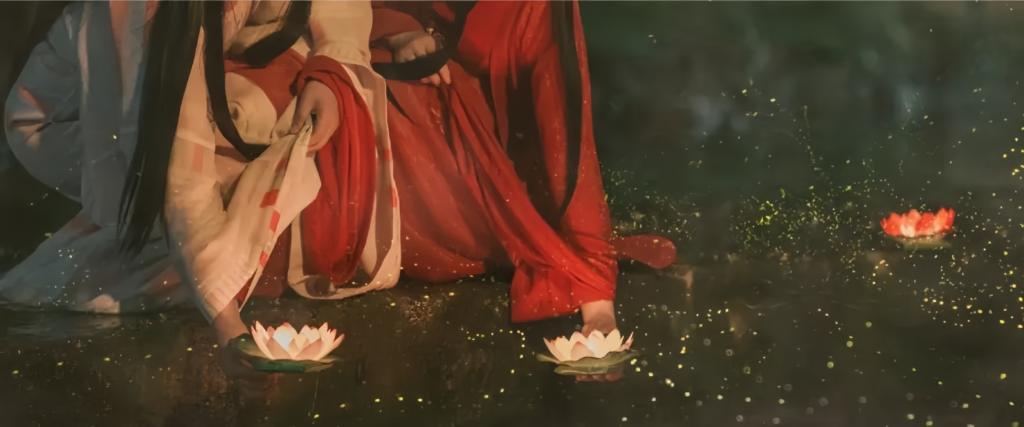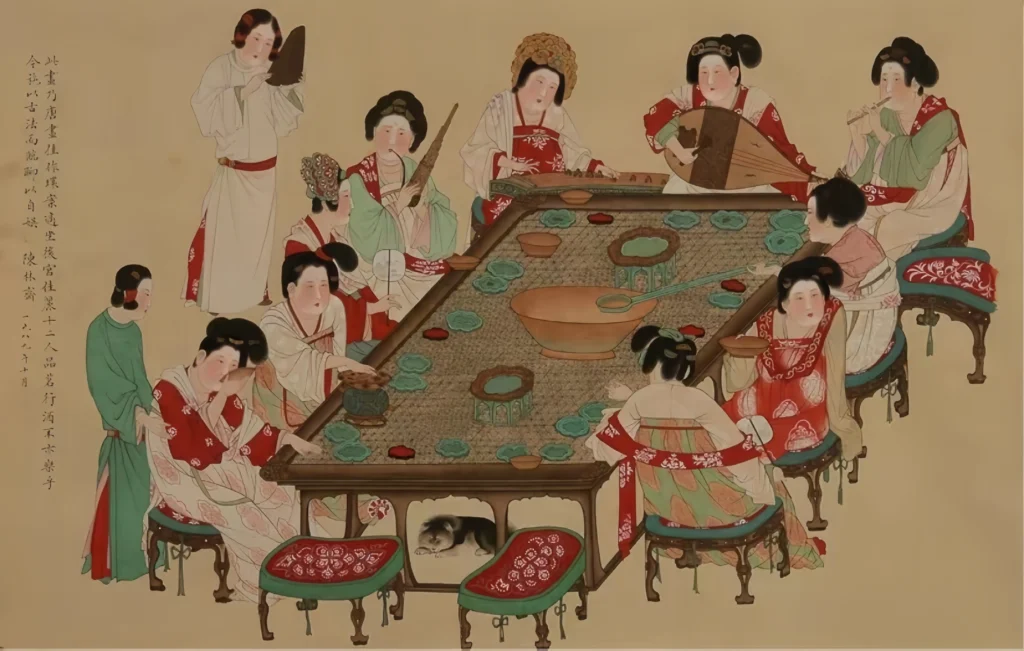Hanfu Culture: Reviving Traditional Chinese Clothing Daily

Hanfu culture has evolved from a bold statement in 2003 Zhengzhou to a vibrant trend. Once drawing curious stares, traditional Chinese clothing now graces streets and social media with flowing robes and intricate designs. Beyond aesthetics, Hanfu culture carries history and pride, uniting enthusiasts in a Hanfu community that celebrates Chinese cultural heritage. Hanfu isn’t just fashion—it’s a living tradition.
Back then, stepping out in Hanfu meant being the center of attention. Strangers would stare, whisper, and sometimes even stop to ask:
👉 “Are you part of some event?”
👉 “Are you filming a movie?”
👉 “What are you wearing? Is it a kimono?”
But times have changed. These days, spotting young men and women dressed in Hanfu on the streets is no longer a rare sight. And in the vast world of social media, Hanfu enthusiasts are thriving—whether it’s through stunning Hanfu photoshoots, beauty influencers teaching vintage makeup and hairstyles, or large-scale Hanfu gatherings.
Getting into Hanfu is easy. But the deeper you dive, the more you realize—it’s far more than just “a pretty outfit.”
The Beauty of Hanfu Is More Than Skin-Deep
Hanfu culture’s revival explores its daily wear across dynasties.
The Hanfu community has always faced criticism and skepticism. Even now, many assume Hanfu lovers are just people obsessed with “wearing fancy clothes.”
But Hanfu isn’t just about aesthetics—it carries the weight of history and culture. Spanning across different dynasties, Hanfu evolved with changes in political thought, social structures, and artistic preferences.
Take Dongjin Shangyu, for example—a Hanfu enthusiast with over a decade of experience. She is the president of Wenzhou’s Hanfu Association (the first nonprofit organization named after Hanfu) and a lifestyle content creator. She once said:
“Hanfu connects the past, from the Yellow Emperor to the late Ming and early Qing dynasties, like a string of pearls, each piece carrying a fragment of our clothing history.”


For true Hanfu lovers, wearing Hanfu often comes with a sense of responsibility—to understand its historical and cultural context. Many enthusiasts dive deep into history, exploring how Hanfu evolved in response to politics, economy, geography, and even climate.
For some, Hanfu is more than just a hobby—it’s a gateway to skills, knowledge, and a deeper appreciation of history. Whether it’s organizing cultural events, learning traditional crafts, or exploring intangible cultural heritage, Hanfu becomes a medium for personal growth.
For these people, Hanfu isn’t just clothing. It’s a journey, a way to experience life through a richer, more colorful lens.
What Exactly Is the “Hanfu Community”?
If you’re a newcomer interested in Hanfu, it’s easy to dive right in. The internet is full of resources, and there are countless ways to connect with like-minded people. Before you know it, you’re part of the community.But with its rapid growth, the Hanfu world has also become a mixed bag. The low barrier to entry means that while many are genuinely passionate, there’s also conflict and drama within the scene.

As the saying goes: “Where there are people, there will be drama.”
Many Hanfu enthusiasts admit that while they love the clothing and culture, they prefer to stay out of “community politics.” They describe their relationship with the Hanfu world as: “I’m part of it, but also not really part of it.”They enjoy sharing styling tips, discussing historical accuracy, and connecting with others who appreciate Hanfu—but they keep their distance from unnecessary arguments.

This tension isn’t unique to Hanfu. It happens in any cultural revival movement. Traditional Chinese culture experienced a historical break—especially after the Qing Dynasty took power—so modern Hanfu culture isn’t something that evolved naturally over time. Instead, it is something being rebuilt and revived.
Because of this, people hold different ideas about what Hanfu should be. Some insist on strict traditionalism, preserving the past exactly as it was, often without considering modern practicality. Others take the opposite approach, experimenting freely—sometimes leading to strange or poorly designed “fusion” outfits. Striking a balance between authenticity and modern adaptation is a challenge.
Hanfu: Not Just an Old Relic, but a “Modern Formalwear”
In the documentary “The Great Craftsmen,” there’s an episode about a Hong Kong designer’s Hanfu journey. The narrator, actress Lin Chi-ling, says:
“Hanfu is not just old clothing from past dynasties—it is a form of modern formalwear that carries tradition forward.”
Dongjin Shangyu embodies this philosophy. While Hanfu is a core part of her daily wardrobe, she effortlessly mixes it with modern fashion. She even creates video tutorials on styling Hanfu with contemporary pieces.
She has no issue with Han-inspired fashion hybrids like “Han-Western fusion” or “Xianxia fantasy outfits,” as she believes they add diversity to modern Hanfu styles. She sees them as part of Hanfu’s natural evolution and cultural expansion.
However, she does draw the line at low-quality materials or designs that sacrifice historical integrity just to chase trends.

But the idea of Hanfu as “modern formalwear” resonates deeply with the community—especially in the context of traditional festivals.
Qingge, another enthusiast, says:
“In everyday life, people should wear whatever suits them. But on traditional Chinese holidays, I wish we could all walk the streets in Hanfu, greeting each other in festive spirit. That, to me, is the ideal Hanfu culture.”
Dongjin Shangyu once worked on a magazine called “Hanfu Era”, where she and her team imagined what a modern Chinese lifestyle could look like—where food, clothing, and customs all followed traditional aesthetics and cultural logic.
They envisioned Hanfu festivals that could be as widely celebrated as Japan’s summer firework festivals or Tanabata celebrations.
But for Hanfu to truly thrive in today’s world, it must find its place within a diverse cultural landscape. It should stand proudly alongside other global cultures, rather than isolating itself.
More importantly, the Hanfu community needs to be more inclusive. Instead of endless internal debates, real efforts should be made to promote and develop Hanfu culture. Only then can it flourish in modern society.

Hanfu Should Be a Part of Everyday Life
For many, traditional Chinese culture has become romanticized—almost mythologized—in their minds. They see it as something grand and distant, like a golden, untouchable dream.
But in reality, traditional culture was never meant to be a fantasy. It was always part of ordinary people’s daily lives. It belonged to the common folk, woven into the fabric of history across five thousand years.
That’s why Hanfu shouldn’t be confined to special occasions or historical reenactments. It should be something people feel comfortable wearing in daily life, just like any other form of fashion.
When that happens, Hanfu won’t just be a “revival.” It will be fully alive again, naturally blending into the modern world.
Embrace Hanfu culture with these ideas:
- Start Simple: Try a Mamian skirt for Hanfu daily wear.
- Join Events: Attend festivals to connect with the Hanfu community.
- Learn History: Visit China National Silk Museum for Hanfu insights.
- Share Styles: Explore tips at China Culture .





Responses